The Great Lakes sea monster, Michepezhoo of Lake Superior, has threaded its way through centuries of legends and remains the center of Ojibwa culture. My husband, Chuck, and I journeyed to Lake Superior Provincial Park in Ontario, Canada to see several ancient pictographs along the Agawa Rock, which included Michepezhoo. Join us on our adventure as we learn about some ancient stories and find out who had painted several of these pictographs.
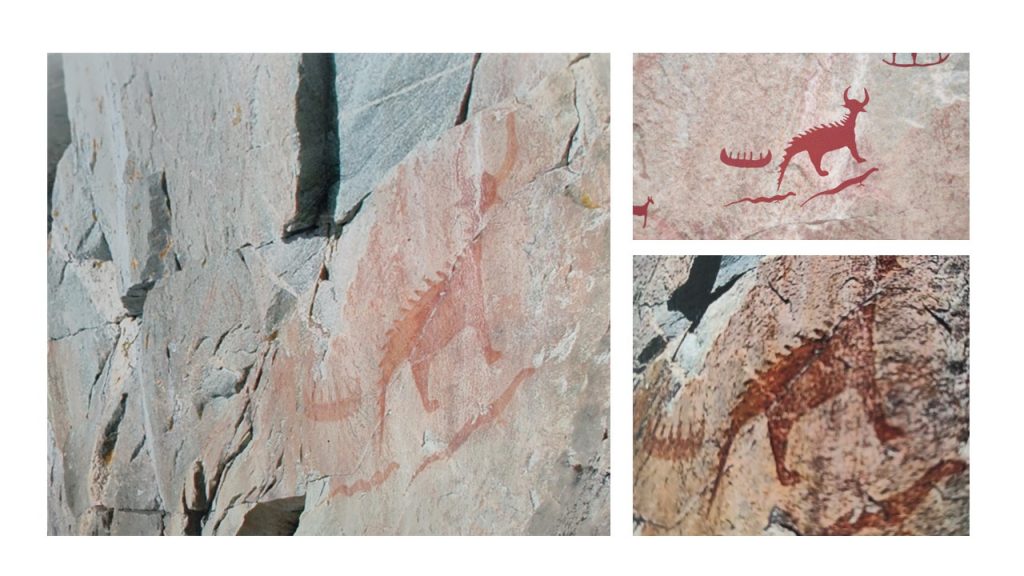
(Left) Most recently in 2023 (right bottom) 1970’s
(top right)This illustration shows the complete design clearly.
Michepezhoo
This illustration of Michepezhoo appears as a mascot throughout the Agawa region. The legendary creature is still revered with pride as a symbol of strength. Michepezhoo has gone by many names: The Great Lynx, The Water Panther and The Copper Monster.

Lake Superior Provincial Park Location
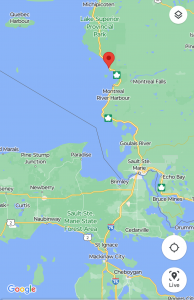
A Serious Warning!
Chuck and I headed for the hiking trail as soon as we reached Lake Superior Provincial Park. I couldn’t wait to witness these centuries old rock paintings. At the beginning of the trail we were met with a bright red sign, “Death and injury have occurred” so “extreme caution is necessary.”
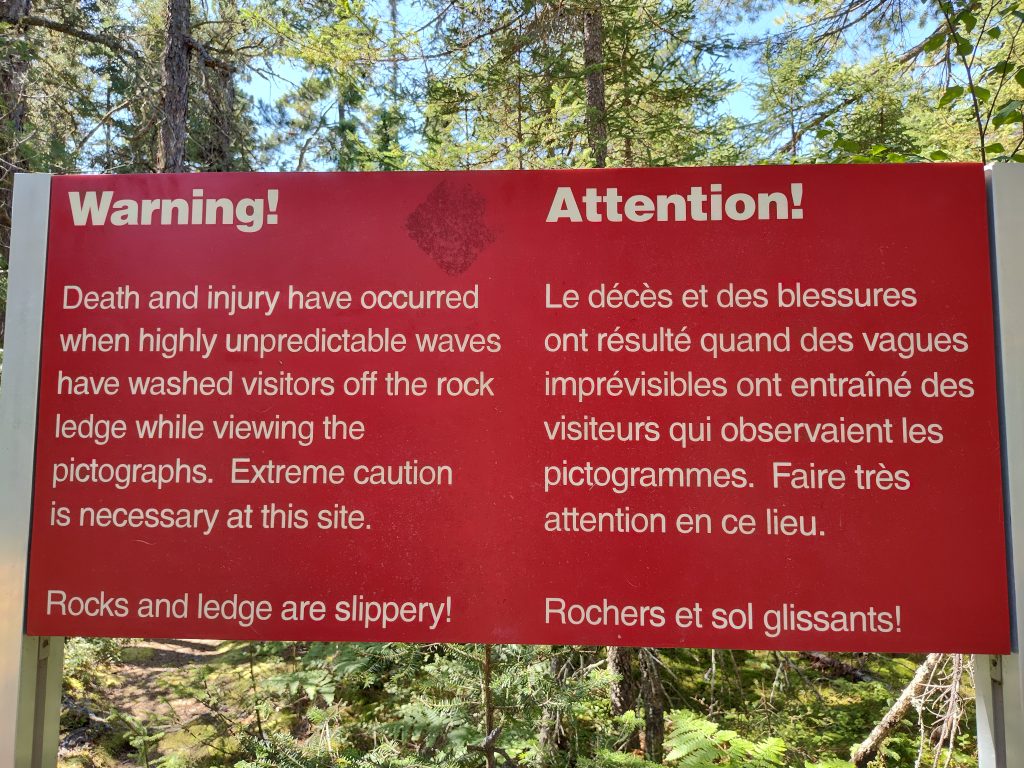
“Well,” I raised my brow and side-eyed Chuck. “This might become one crazy story!” I shrugged nervously, noting to step carefully along the path.
The Hike To The Pictographs
Soon the rocky, wooded path narrowed to a tunnel between granite walls. “This had once been full of lava which had hardened into basalt.” Chuck explained. “Then, the basalt eventually washed away. Basalt is softer, but the harder granite has remained.”
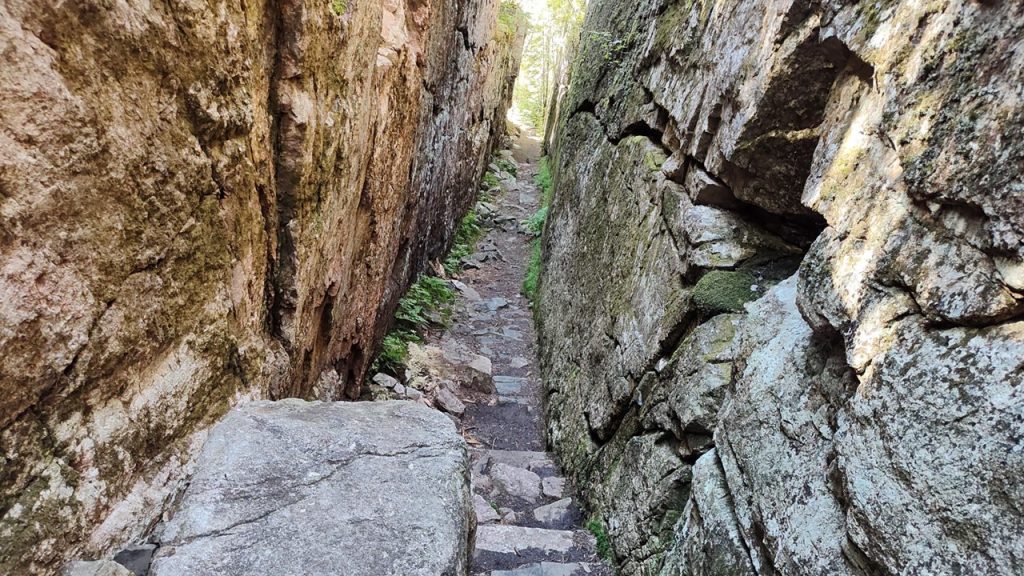
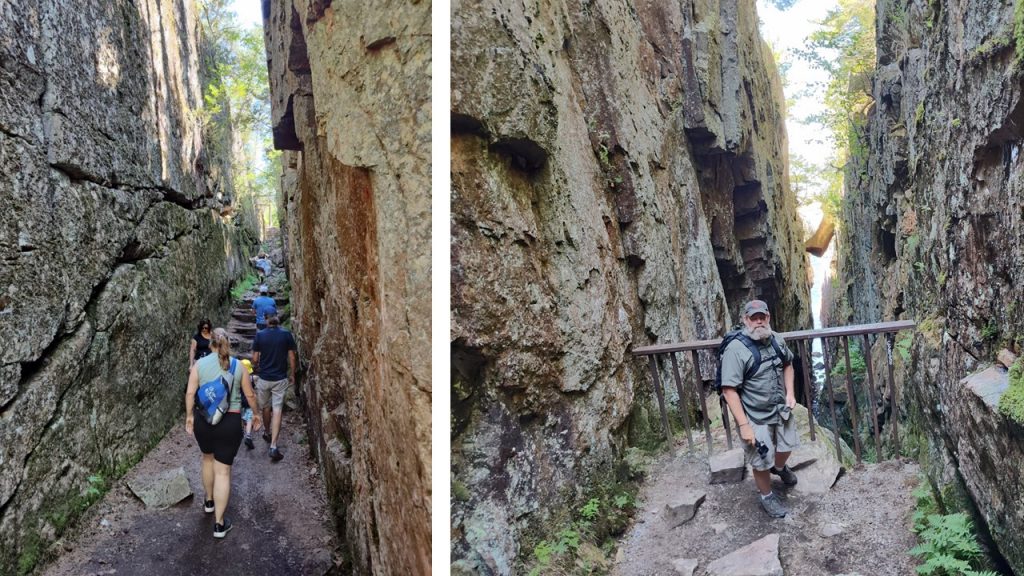
Chuck stood at a closed passage as a boulder teetered precariously above this path. (right)
Reaching Lake Superior
Warm breezes and lapping waves greeted us as we neared the rocky shoreline. Lake Superior was resting peacefully under a bright August sky.
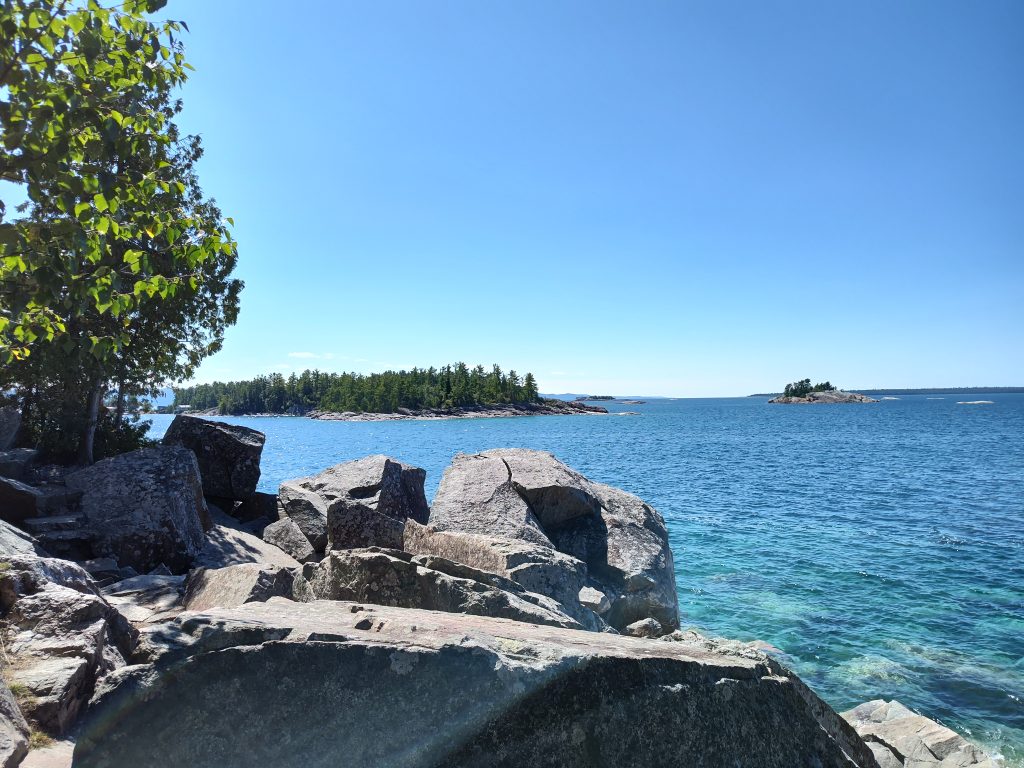
The Sloping Ledge
A dozen people were gingerly stepping, single filed along the sloping ledge. A chain laid along the first section of the trek. I willingly grabbed ahold of the metal life-line.
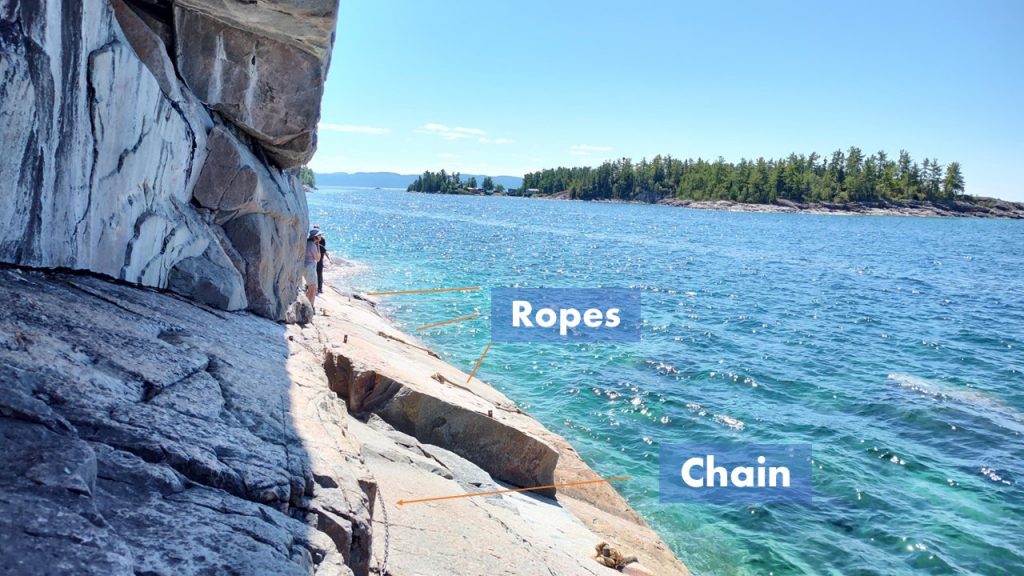
As we moved around each other, the silence of the tourists set the tone of reverence and respect. What an honor it was to be witness to these Great Lakes pictographs! I kept concentrating on each footfall as I inched my way along the ledge.
The “Life Guard” ropes stretched into the water, lying ready to assist any visitor who may slip into the frigid lake. I noticed that the ropes were covered with slick algae. ‘That would make them difficult to grasp and so slimy to touch’ I winced and stepped even more deliberately.

I imagined the challenge it would take to move along this slanted, slippery path during Lake Superior’s angry days. Even with this bright, calm day, I crept carefully along the ledge to view these miraculous paintings.
My Moment With Michepezhoo
A gentleman wearing a knee brace and I skirted around each other at the Michepezhoo illustration.
“I saw this twenty years ago.” he quietly commented, ” I just needed to see it again.” We pondered while Lake Superior shimmered. In silence I clicked a few photos. Then he questioned aloud, “I wonder what was used to paint this? How has it stayed all these years?”
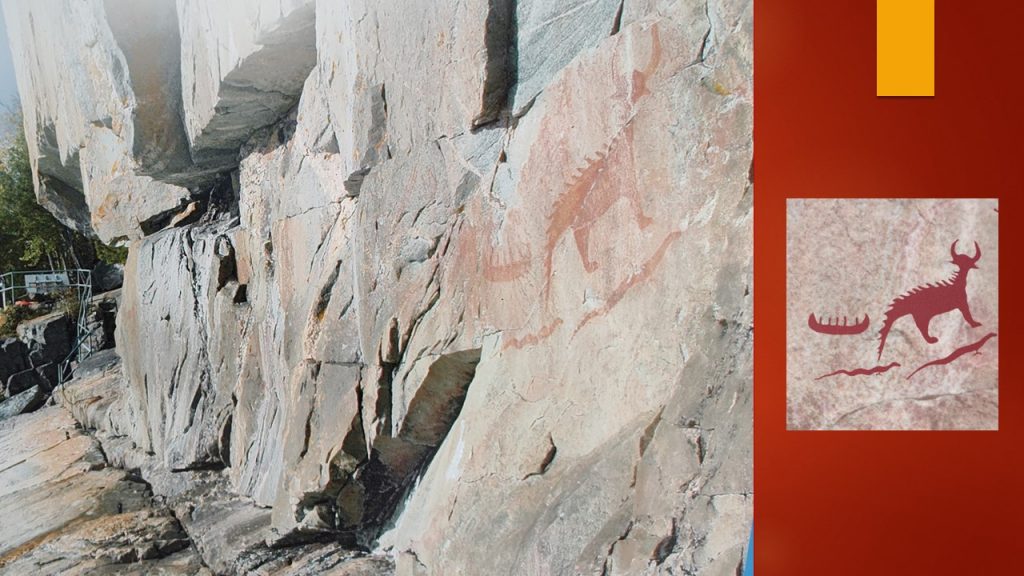
I shared what I knew about the crushed iron oxide, hematite, mixed with animal fat. The man silently nodded. His eyes remained fixed on the figure. I felt that he needed space, so I took my leave. From further down the ledge I looked back. The gentleman had remained standing quietly with his hand next to Michepezhoo. It appeared that the two were engaged in a wordless conversation. This proves that Michepezhoo still holds a mesmerizing power, even today.
A Michepezhoo Legend
This whole Gitchee Gumee region (Lake Superior) had once been Ojibwa land. The legend had started that many years ago an Iroquois tribe had started to paddle across the lake in an attempt to challenge the Ojibwa tribe. Ojibwa Chief Myeengun had stood firmly, high on the cliff and raised his arms calling on Michepezhoo, The Great Lynx. Michepezhoo rose from the depths and thrashed his spiked tail. This sudden furry had created wind and waves which had capsized the Iroquois canoes. Michepezhoo, under the Chief’s direction, had prevented the Iroquois invasion!
Chief Myeengun, The Wolf of the Mermaid, felt a warning needed to be displayed to others who may consider disparaging the Ojibwa. He decided to paint a scene on this rocky ledge.
In pursuit of red iron oxide, ochre-like rock he paddled 35 km to an island. The Chief crushed the stones into a powder. Then he mixed it with fish oil and animal fat.
Using this red paste, the chief had painted his warnings to others on the face of Awaga Rock. Michepezhoo, The Great Lynx, had been featured as fiercely protecting the people of Gitchee Gumee. The Great Lynx’s spiky tail, spiny back and large horns would give pause to anyone.
Four Canoes
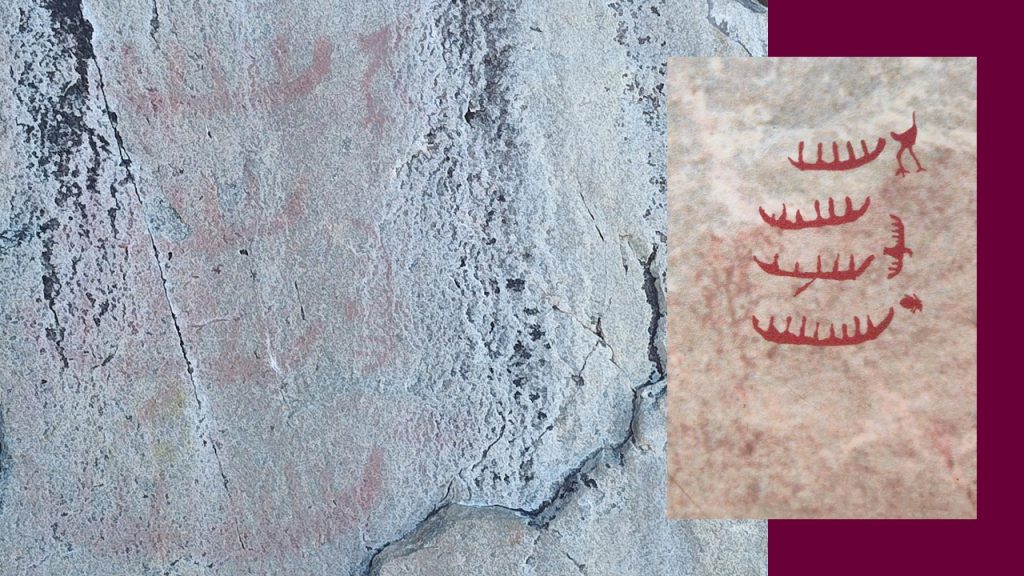
On the right are illustrations of the original artwork.
In a nearby location on the rocky wall Myeengun had painted four canoes heading directly into the path of animals known for their strength: a crane, a thunderbird and a beaver. This artform would serve as a further warning to anyone considering another attack on the Ojibwa.
Shingwaukonce Legends
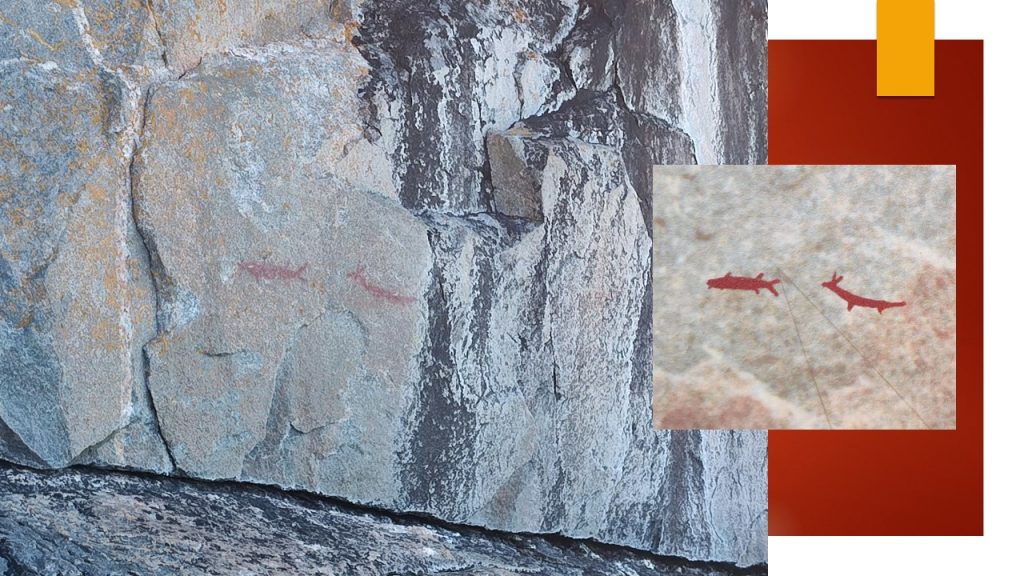
captivated by the long ago messages reaching out from previous centuries.
Oral recollections shared a centuries old tale of Shingwaukonce, an Ojibwa shaman, who had gone to this cliff on a spirit quest when a rival shaman had challenged him. Shingwaukonce fasted and had a vision where he’d turned himself into a louse and rode a raven into the spirit world. Only a great shaman could achieve such a feat! Shingwaukonce decided his story must be painted on the rock face. It was like a ‘primitive resume,’ author Mickel Classen had called it. The stories confirmed that Shingwaukonce had kept his leadership position in the tribe.
A View From The Water
The best way to see the whole display of pictographs would be by kayak. ‘Naturally Superior Adventures’ holds training classes and rents kayaks. They also have a guided tour in a large freighter canoe that can fit 20 people.
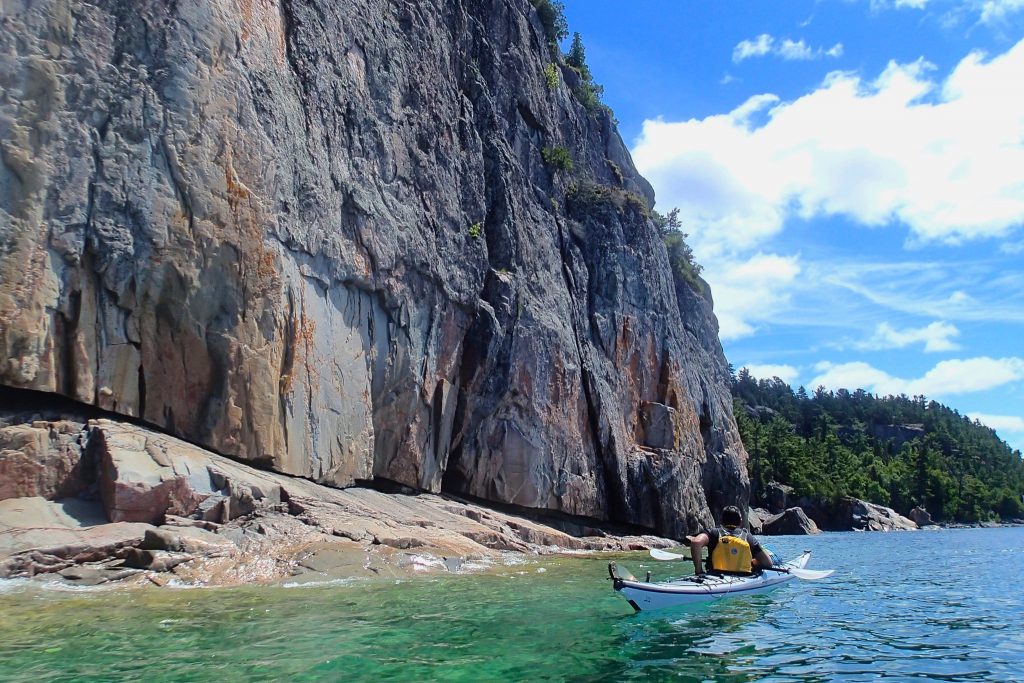
Pictograph History
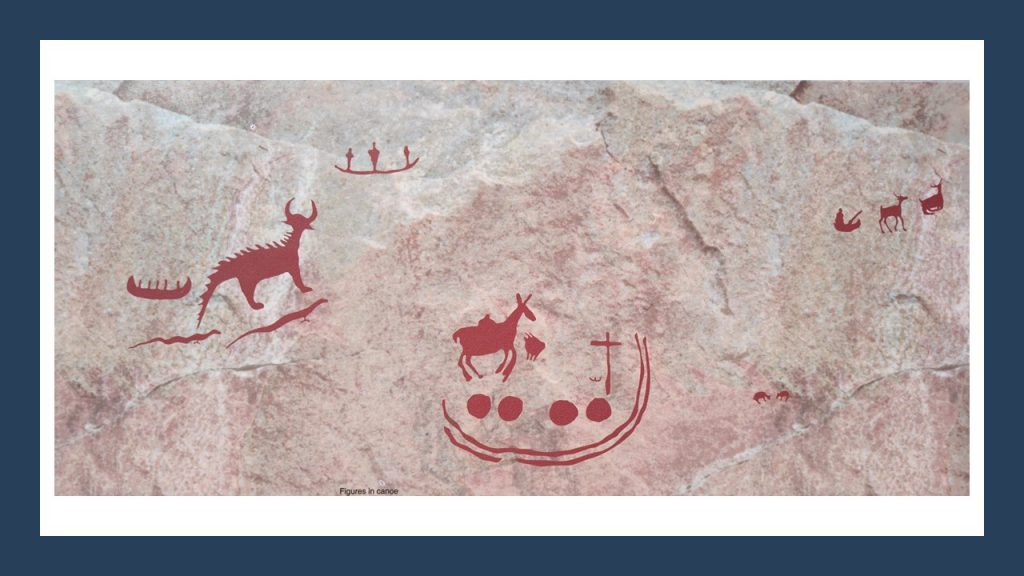
Visitors to the sight may find offerings of sweet grass or tobacco left by Ojibwa members.
Photo Credit: Lake Superior Provincial Park
It is believed that there are many more artists and legends which have been erased by time. Piecing together oral histories, since the first written documentation didn’t occur until 1851, archaeologists have definitely linked two Ojibwa leaders: Myeengun and Shingwaukonce.
These connections were made in the mid 1800’s when a descendant tribe member had been interviewed. Shingwauk, Little Pine, drew these pictograph images on birch bark from memory when Henry Rowe Schoolcraft researched tribal culture. Schoolcraft had been assembling native stories for his 1851 book, Intellectual Capacity and Character of The Indian Race. These drawings and legends about Myeengun and Shingwaukonce appear in Schoolcraft’s publication. This book stands as the first written recording of these legends.
It wasn’t until over 100 years later in 1958, that modern inhabitants confirmed the pictographs existence. Selwyn Dewdney, on an expedition, reported witnessing these drawings on Agawa Rock cliff.
Ponderings
Viewing these ancient pictographs, snapshots of long-ago sagas, has captivated my imagination. I immediately began conjuring stories about the illustrators and their adventures. The serene reverence of quiet tourists along the lapping shore will be a place I’ll revisit often in my mind.
Stay tuned for Chuck’s video about visiting this historical site, Agawa Pictographs.
Related Links:
“The Canadian Wilderness” article is about our journey searching for ‘unimproved’ settlements.
Restless Viking merchandise is available!
Resources:
True Tales: The Forgotten History of Michigan’s Upper Peninsula by Mikel B. Classen
Lake Superior Provincial Park website
Naturally Superior Adventures website Thanks, David!




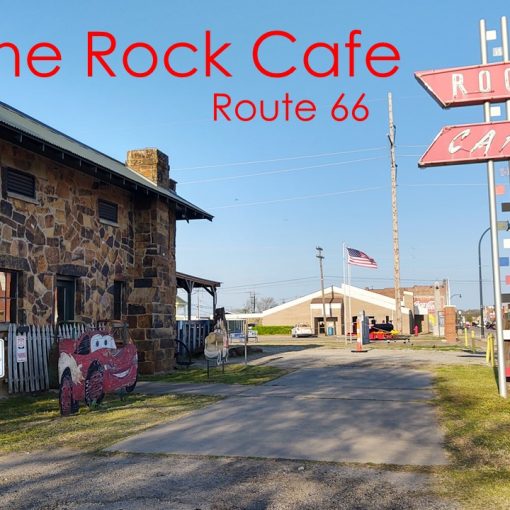

One thought on “Great Lakes Pictographs – Agawa Rock”
Never heard of this. So very interesting!